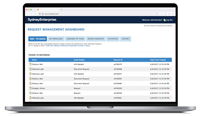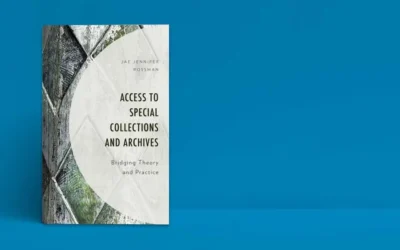Interview with the Author: Dr. Patricia Franks on Records and Information Management
Lauren Hays
Dr. Patricia Franks is the author of Records and Information Management, now with an upcoming third edition to be published by ALA Neal-Shuman in the spring of 2025. My interview with her follows.
By way of introduction, Dr. Franks’ bio is below.
About the Author
Dr. Franks, Professor Emerita, San Jose State University, teaches courses in enterprise content management and digital preservation in the school of information. She earned her PhD in Organization and Management from Capella University. She is a Certified Archivist, Certified Records Manager, Information Governance Professional, and Certified Information Governance Officer. She is a member of ARMA International’s Company of Fellows, the CIGO Association Board of Directors, and Preservica’s Digital Preservation Sustainability Council. She is a past president of the National Association of Government Archivists and Records Administrators (NAGARA), author of Records and Information Management (3rd edition soon to be released), and editor or co-editor of numerous research publications including The Handbook of Archival Practice. Her research interests lie in emerging technologies, especially artificial intelligence and block chain technology, and their impact on records management and information governance.
Briefly summarize Records and Information Management.
The 3rd edition of Records and Information Management offers holistic coverage of the basics of records management, information governance, and data governance. It also provides an overview of the evolution of technology and thinking in the field. Concepts from the fields of risk management, privacy, and cybersecurity are incorporated throughout its pages.
What is new in the third edition?
Like the edition before it, the third edition contains 14 chapters. However, because much has changed since that was released, content was removed or reorganized to allow the addition of two new chapters: “Data Governance, Automation, and Artificial Intelligence”, and “Leadership and Management Skills for Information Professionals”.
In addition, instead of one contribution by individuals with expertise in records and information management and related domains, the third edition has two such contributions. The 28 paradigms (practical examples) or perspectives (thought pieces) cover topics such as Enterprise Knowledge Graphs; Mergers, Acquisitions, Divestitures, and Closures; Microsoft Teams; the Metaverse; Data Privacy and Security; ChatGPT; and Ethical Literacy.
How have you seen the field of records and information management change with new technology?
Two things come to mind. First, technology has always impacted the field—typewriters, desktop computers, and file cabinets were among advanced technology introduced in the past. The main duties of the records and information manager remain the same: to document the actions and decisions made within our organizations, and in doing so, to employ creativity and flexibility in a dynamically evolving environment. The second is probably the most impactful change. In the past (and for the most part today), we “employed” technology to help us perform tasks. With the evolution of artificial intelligence, machine learning, deep learning, large language models such as ChatGPT, and more, we must accept that at some point we will “work alongside” the technology. AI agents will perform much of the work we performed in the past. However, it is up to us to help our organizations understand what is required to do so in an ethical, responsible manner.
What skills does someone new to the field of records and information management need?
Today’s records and information manager must possess a combination of conceptual, human, and technical skills. The soft skills of teamwork, collaboration, critical thinking, problem solving, and communication are as important as ever. Those new to records and information management must master theory (such as that related to creation, use, retention and preservation) and engage in practical activities (hands-on experience with software and systems and learning alongside others in the workplace). In addition, they must understand the role they play within an information governance program and how to interact with other stakeholders (e.g., those from privacy, legal, risk management, and cybersecurity domains).
How have those skills changed over time?
Probably the most noticeable change is that the records manager is no longer the sole “keeper of the record.” They are now a vital part of a team responsible for data, information, and records vital to the success of the organization and for the enlightenment of future generations. This responsibility requires the development of additional skills related to new technology and governing laws and regulations.
How do you recommend someone stay current in the field of records and information management?
The same way we have always stayed current: through lifelong education, training, and professional development. Besides focusing narrowly on our field, we must expand our horizons to include developments related to privacy, cybersecurity, risk management, data analytics, infonomics, and more.
Is there anything else you would like to share?
Yes, I would like to share this excerpt from the Introduction in the third edition of the book:
Even though we are in a perpetual state of sociotechnical change, there is one constant: data, records, and information are still created, managed, used, shared, retained, and disposed of or preserved for future generations. This book—and the field of records and information management—is more important than ever! Its goal is to provide stability in a world that gets overly excited about the next new thing. That’s not to say our profession is exempt from challenges. It’s just that we have learned over the centuries the importance of documenting the actions and decisions made within our organizations and the need for creativity and flexibility in doing so in a dynamically evolving environment.
Lauren Hays
Dr. Lauren Hays is an Assistant Professor of Instructional Technology at the University of Central Missouri and a frequent presenter and interviewer on topics related to libraries and librarianship. Please read Lauren’s other posts relevant to special librarians. Learn about Lucidea’s powerful integrated library systems, SydneyDigital and GeniePlus, used daily by innovative special librarians in libraries of all types, sizes, and budgets.
**Disclaimer: Any in-line promotional text does not imply Lucidea product endorsement by the author of this post.
Never miss another post. Subscribe today!
Similar Posts
Texas Archive of the Moving Image: Interview with the Digital Archivist
I recently interviewed Grace Muñoz about her work at the Texas Archive of the Moving Image. Her work on improving the discoverability of the multimedia collection is fascinating.
Interview with Author and Librarian Dr. Jae Rossman on Special Collections and Archives
Dr. Jae Rossman wrote Access to Special Collections and Archives, available now from Rowman and Littlefield. The book is an excellent resource for special librarians who work with special collections and archival materials.
Are There Drawbacks to Using GenAI for Research?
Researchers must take responsibility for understanding how GenAI works and closely review literature search results before relying on them. Let’s take a look at three major drawbacks for researchers and special librarians to consider when leveraging or recommending GenAI platforms.
Researching with GenAI: Tools & Tips for Special Librarians
When GenAI first became widely available, there was a great deal of discussion about how it would “hallucinate”—that is, make up content and sound very sure of itself when doing so.





Leave a Comment
Comments are reviewed and must adhere to our comments policy.
0 Comments